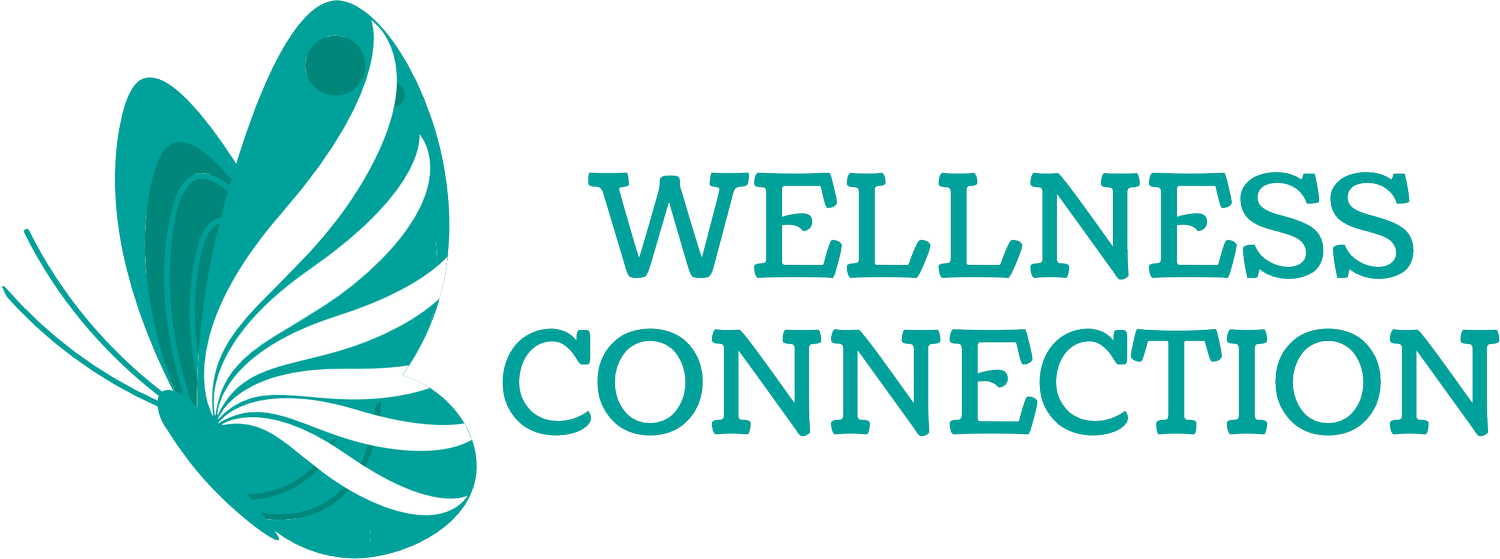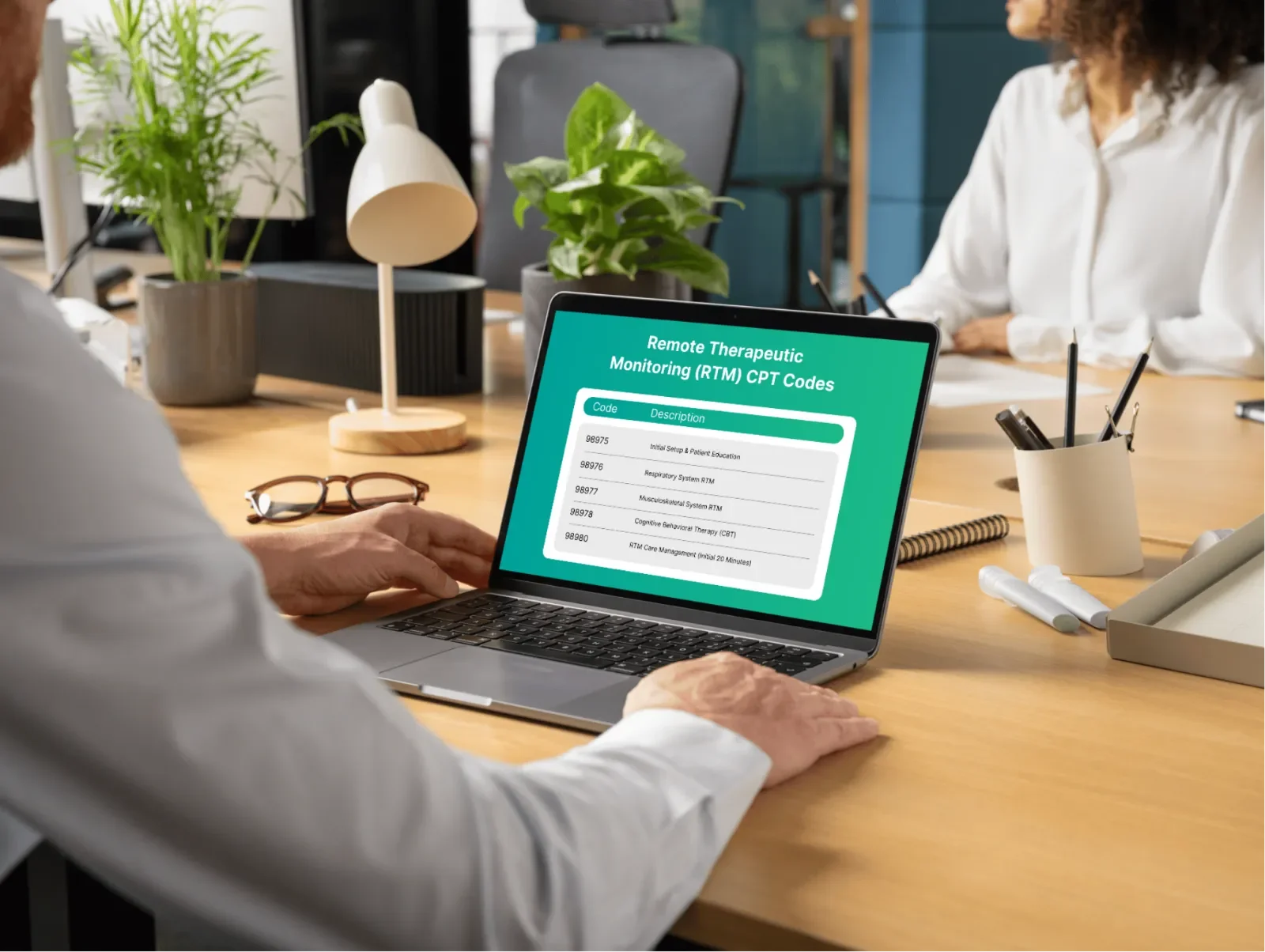A Comprehensive Guide to Remote Therapeutic Monitoring (RTM) CPT Codes
Remote Therapeutic Monitoring is a valuable service that Wellness Connection is proud to offer within our digital care services suite. Our philosophy of utilizing a Collaborative Care Model, taking a holistic approach to patient care has become a pivotal aspect of patient health monitoring. We provide RTM devices that allow healthcare providers to monitor non-physiological data such as mental health, medication adherence, musculoskeletal status, respiratory health, and therapy response using digital platforms.
To ensure that healthcare providers are reimbursed for these services, the first set of CPT codes was introduced by the Centers for Medicare & Medicaid Services (CMS) in 2022, and the American Medical Association (AMA) CPT panel updates changes each calendar year. Let’s break those down and see how they work.
Which CPT codes do you need to know?
They fall into two main categories:
Initial Setup and Device Supply
Time-based payments for care management
RTM Device Supply Codes
1. CPT Code 98975 – Initial Setup & Patient Education
Covers setup and patient education on the RTM program.
Can be billed once per patient per episode of care.
Average payment: $19 (one-time)
Use Case: A patient beginning a new mental health treatment plan receives detailed instructions on how to self-report their mood fluctuations, sleep patterns, anxiety levels, and energy throughout the day.
Note: The following device codes ALL require at least 16 days of data collection and transmission per calendar month to qualify for billing.
2. CPT Code 98976 – Respiratory System RTM
Covers monitoring of respiratory illnesses.
Includes daily recordings and transmission of respiratory health data.
Average payment: $43 per month
Use Case: An asthma patient uses a digital platform to log and transmit their symptoms daily, shortness of breath levels, and any medication usage for at least 16 days within a month.
3. CPT Code 98977 – Musculoskeletal System RTM
Covers monitoring of musculoskeletal conditions.
Includes daily data transmission related to movement, posture, and therapy adherence.
Commonly used by physical therapists, orthopedists, and rehabilitation specialists.
Average payment: $43 per month
Use Case: A patient recovering from a spinal injury uses an online portal to report pain levels, track mobility progress, and how they are feeling about their symptoms for at least 16 days within a month.
4. CPT Code 98978 – Cognitive Behavioral Therapy (CBT)
Covers monitoring of mental health conditions, medication adherence, and therapy engagement.
Average payment: $43 per month.
Use Case: A psychologist uses a mobile app to track a patient’s behavioral responses in a CBT program for anxiety management.
RTM Time-based Service Management Codes
Note : For the following service codes, the care manager must spend a minimum of 11 minutes actively managing the data and communicating with the patient.
5. CPT Code 98980 – RTM Care Management (Initial 20 Minutes)
Covers the care manager's time spent reviewing RTM data, talking with the patient, and communicating with the treatment team.
First 20 minutes of interactive communication with a care manager.
Can be billed once per calendar month. Average payment: $50 per month
Use Case: A care manager has a weekly call with a patient to discuss any problems that the patient might be dealing with.
6. CPT Code 98981 – RTM Care Management (Per Additional 20 Minutes)
Covers an additional 20 minutes of care management beyond the initial 20 minutes.
Used if a provider spends more than 20 minutes in a given month managing RTM data.
Can only be billed a maximum of 3 times, average payment: $39 per month
Billing tips for RTM
1. Document Clinical Relevance and Patient Consent
Medical Necessity: Ensure RTM is prescribed for ongoing management of a diagnosed condition (e.g., depression, insomnia, anxiety, COPD, musculoskeletal pain).
Patient Consent: Document verbal or written consent before initiating RTM.
Clinical Use: Use data to inform ongoing treatment decisions; document how data influenced the care plan.
2. Use a Compliant Platform That Tracks Non-Physiological Data
Ensure your RTM device/software:
Collects and transmits therapy adherence or symptom data (e.g., sleep, mood, physical therapy exercises).
Maintain clear logs of interactive communication between care manager and patient (e.g., secure messaging, phone calls, telehealth) including a time log.
3. Avoid Common Billing Pitfalls
Don’t double bill RTM and RPM for the same data or the same 30-day period unless different conditions and devices are being monitored.
Don't bill 98980/98981 without documenting the specific time and patient interaction.
Remote Therapeutic Monitoring (RTM) CPT codes have opened new opportunities for telehealth expansion and digital therapeutics. It’s a win-win for providers and patients, especially as healthcare shifts to a more digital, value-based model. It allows care managers to engage with patients remotely, improving adherence, monitoring therapy outcomes, and reducing hospital readmissions.
Need Help with RTM Billing?
If you're a provider looking to integrate Remote Therapeutic Monitoring (RTM), we offer a turnkey solution designed to minimize the workload for your clinic while ensuring full billing compliance and maximum reimbursement. Want to learn more about how RTM can benefit your practice? Reach out today for a demo:
Resources :
American Medical Association (AMA) CPT Guidelines
Centers for Medicare & Medicaid Services (CMS) Billing Rules





